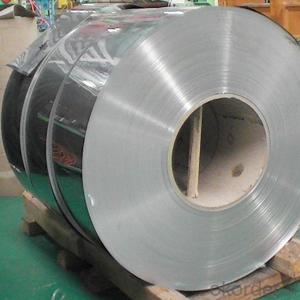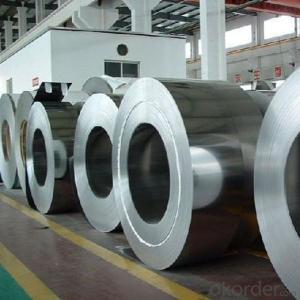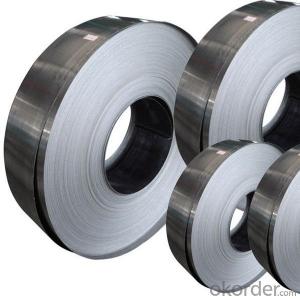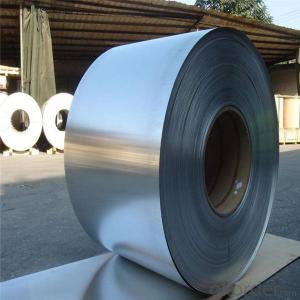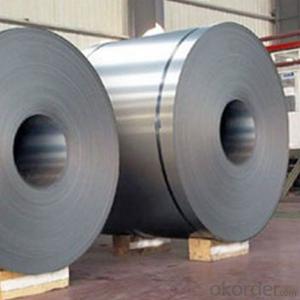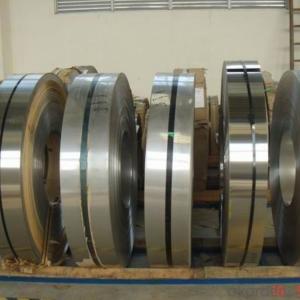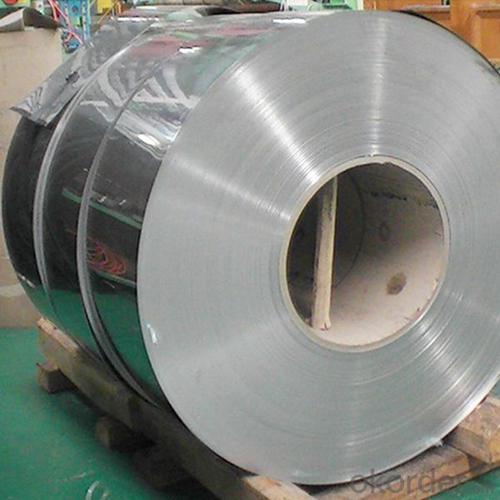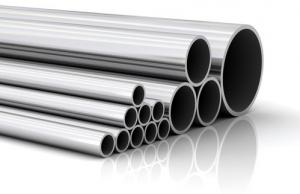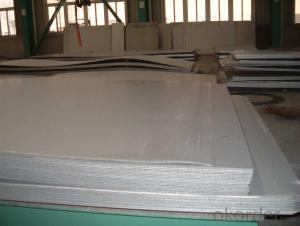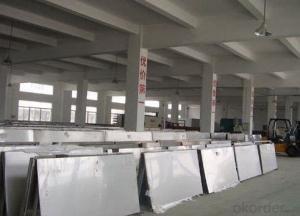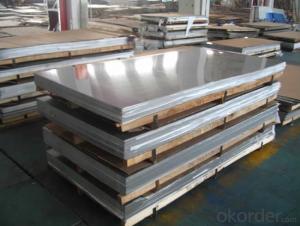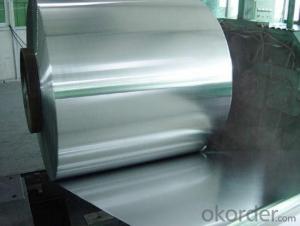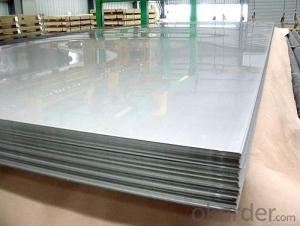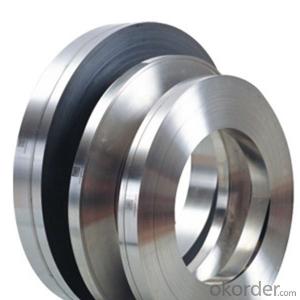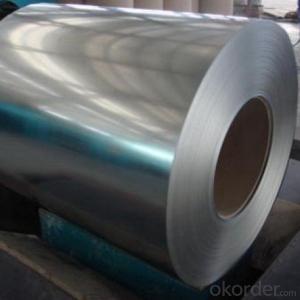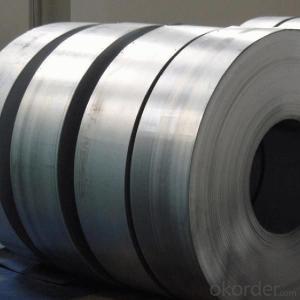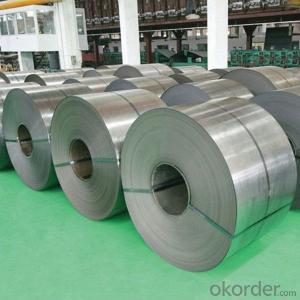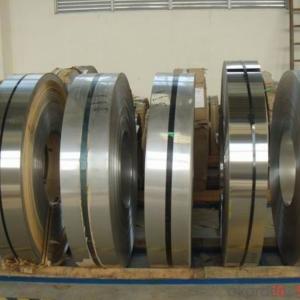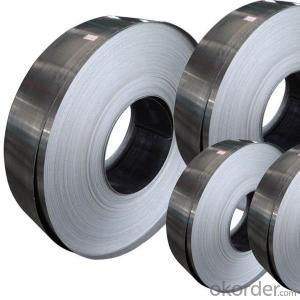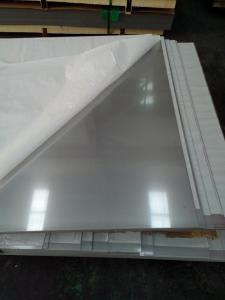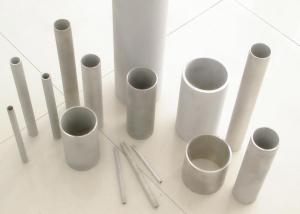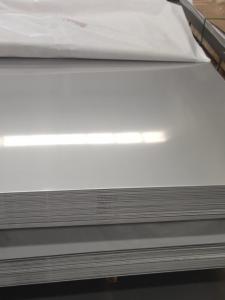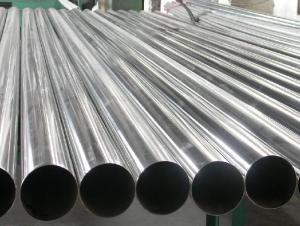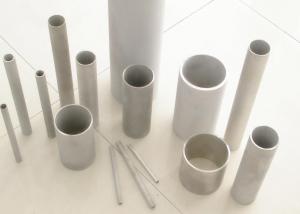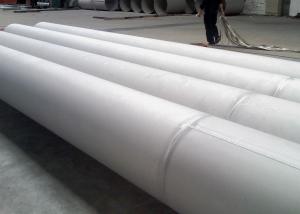Hot Rolled Stainless Steel NO.1 Finish Grade 304 With Good Quality
- Loading Port:
- China main port
- Payment Terms:
- TT OR LC
- Min Order Qty:
- 20 m.t.
- Supply Capability:
- 100000 m.t./month
OKorder Service Pledge
OKorder Financial Service
You Might Also Like
Specification
Specifications for Stainless Steel Coils/Sheets:
Prodcut:Stainless Steel Coil
Thinckness: 0.20mm-8.0mm
Width:1000mm, 1219mm(4 feet), 1250mm, 1500mm, 1524mm(5 feet),
1800mm, 2000mm, 2200mm, 2500mm,and customizable
Ni:0.8~1.2% Cu:1.4~1.5% Cr:14
Standard: ASTM, JIS, GB, BS, DIN etc
Grade: 200series&300series&400series
Surface finish: 2B, BA, 8K, 6K, Mirror Finished, No1, No2, No4, Hair Line with PVC
Manufacture technology: cold rolled/hot rolled
Thickness Tolerance: +/-0.1mm
Width Tolerance: +/-10mm
200 Seriers: 201,202
300 Seriers: 301, 304, 304L, 316L, 309, 310S,321
400 Seriers: 410, 410S, 409L,430
Export Markets for Stainless Steel Coils/Sheets:
Our target market is the international market. Every year we export most of products to countries like India, Pakistan, South Korea, Brazil, Australia, South Africa, Spain, Sri Lanka, Taiwan, Hong Kong, etc.
Payment&Delivery
Payment Terms | 100% LC at sight,or 30%TT in advance, balance against B/L copy |
Delivery Time | With 30-40 days after deposit |
Price Terms | Ex-Work, FOB, CNF, CFR, CIF,etc |
Application for Stainless Steel Coils/Sheets
Finish | Definition | Application |
2B | Those finished, after cold rolling, by heat treatment, pickling or other equivalent treatment and lastly by cold rolling to given appropriate luster. | Medical equipment, Food industry, Construction material, Kitchen utensils. |
BA | Those processed with bright heat treatment after cold rolling. | Kitchen utensils, Electric equipment, Building construction. |
NO.3 | Those finished by polishing with No.100 to No.120 abrasives specified in JIS R6001. | Kitchen utensils, Building construction. |
NO.4 | Those finished by polishing with No.150 to No.180 abrasives specified in JIS R6001. | Kitchen utensils, Building construction, Medical equipment. |
NO.1 | The surface finished by heat treatment and pickling or processes corresponding there to after hot rolling. | Chemical tank, pipe. |

Detail picture for Stainless Steel
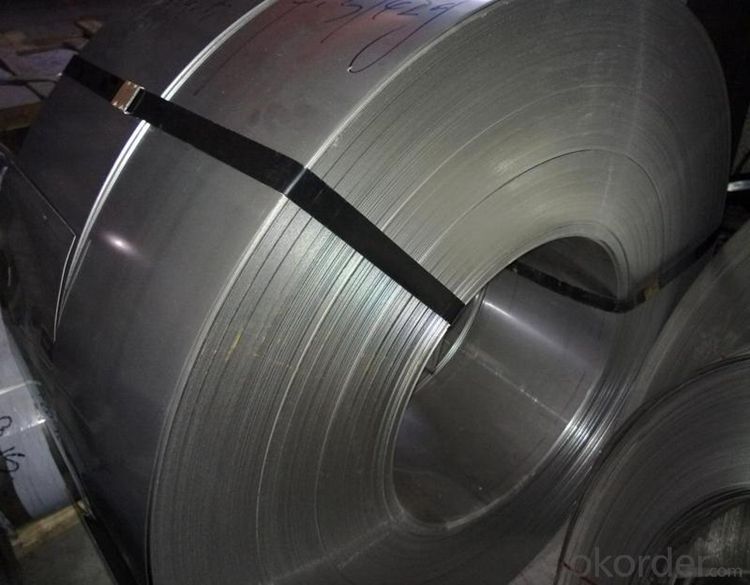
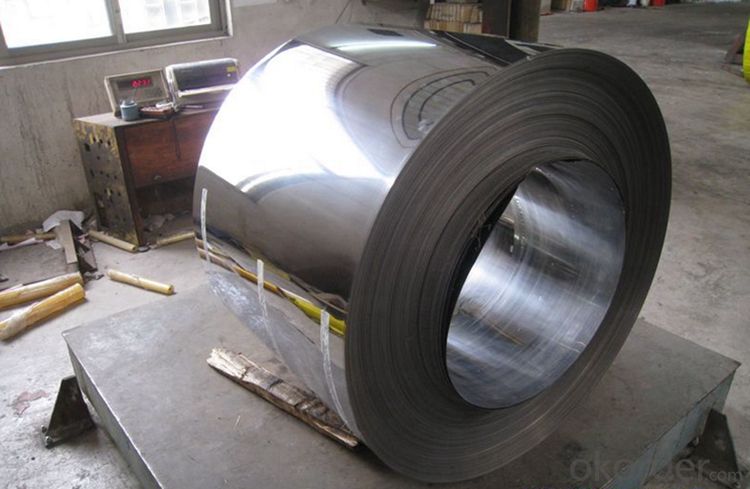
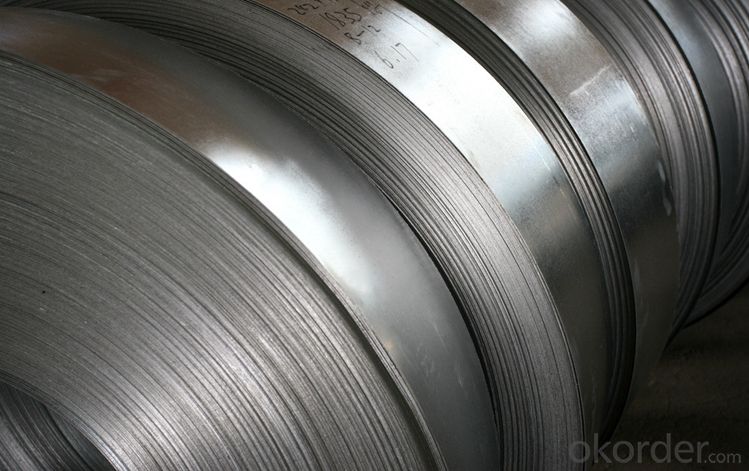
FAQ for Stainless Steel
Q: How long is the delivery time?
A: Normally 30-40 days, but mostly according to the specific requirements or the quantity
Q: Could you send me sample?
A: We can supply you with the sample for free, but the delivery charges will be covered by customers.
- Q: Stainless steel plate more than the thickness of the wire can not be drawn ah?
- It seems more than 8 mm bar, hot rolled on the surface does not look good, 6 mm 304 stainless steel plate, as well as cold rolled, you can wire drawing
- Q: 304 stainless steel plate price ups and downs affected by what factors?
- Some monopolies or monopolies combine to control prices. The indirect regulation of some large enterprises also has a partial effect on the price of stainless steel.
- Q: How do you prevent fingerprints on stainless steel sheets?
- To prevent fingerprints on stainless steel sheets, there are several steps you can take: 1. Clean the surface: Before taking any preventive measures, make sure to thoroughly clean the stainless steel sheets using a mild detergent or stainless steel cleaner. This will remove any existing fingerprints or smudges. 2. Use gloves: When handling stainless steel sheets, wear gloves to prevent transferring natural oils from your hands onto the surface. Opt for cotton or nitrile gloves, as they provide a good grip and won't leave behind residue. 3. Avoid touching directly: Try to minimize touching the stainless steel surface as much as possible. This can be achieved by using specialized tools or wearing gloves when handling and installing the sheets. 4. Apply a protective coating: There are various protective coatings available in the market specifically designed for stainless steel. These coatings create a barrier that repels fingerprints and makes cleaning easier. Follow the manufacturer's instructions for proper application. 5. Use microfiber cloth: When you need to clean the stainless steel sheets, use a soft microfiber cloth. Microfiber is gentle on the surface and helps prevent streaks and fingerprints. Avoid using abrasive materials or rough scrubbers that can damage the stainless steel finish. 6. Regular cleaning routine: Establish a regular cleaning routine to remove any fingerprints or smudges that may appear over time. Dilute a mild detergent in warm water and use a soft cloth or sponge to wipe down the stainless steel sheets. Rinse with clean water and dry thoroughly. By following these preventive measures and cleaning techniques, you can significantly reduce the appearance of fingerprints on stainless steel sheets and keep them looking clean and pristine.
- Q: Can stainless steel sheets be used for roofing?
- Indeed, roofing can utilize stainless steel sheets as they possess qualities such as durability, longevity, and resistance against corrosion, rust, and weathering. As a result, stainless steel serves as an exceptional choice for various roofing applications, including industrial, commercial, and residential projects. These sheets offer remarkable strength and the ability to endure adverse weather conditions, including heavy rain, snow, and wind. Furthermore, stainless steel exhibits fire resistance and remains free from warping or cracking, thereby ensuring a dependable and secure roofing solution. However, it is crucial to acknowledge that stainless steel roofing materials can be pricier than alternative options, necessitating the consideration of cost factors.
- Q: Can stainless steel sheets be used for exterior cladding?
- Indeed, exterior cladding can utilize stainless steel sheets. The robustness and resistance to corrosion of stainless steel make it appropriate for various purposes, including cladding. Stainless steel sheets present exceptional endurance against weathering, UV rays, and extreme temperatures, rendering them perfect for external usage. They can endure severe environmental conditions, such as heavy rain, snow, and strong winds, without deteriorating or losing their aesthetic charm. Moreover, stainless steel sheets are available in an extensive array of finishes, allowing for customization and design adaptability. Whether for residential, commercial, or industrial edifices, stainless steel cladding offers a durable and visually pleasing solution.
- Q: Can stainless steel sheets be used for elevator cabs?
- Yes, stainless steel sheets can be used for elevator cabs. Stainless steel is a popular material choice for elevator cabs due to its durability, resistance to corrosion, and aesthetic appeal. It provides a sleek and modern look, making it a desirable option for both commercial and residential elevators. Stainless steel sheets can be easily fabricated and customized to fit the specific dimensions and design requirements of an elevator cab. Additionally, stainless steel is easy to clean and maintain, which is important for high-traffic areas like elevators. Overall, stainless steel sheets are a suitable and reliable choice for elevator cabs.
- Q: How long do stainless steel sheets last?
- Stainless steel sheets are known for their durability and longevity. In general, the lifespan of stainless steel sheets can vary depending on various factors such as the grade and quality of the stainless steel, environmental conditions, and maintenance practices. However, under normal circumstances and proper care, stainless steel sheets can last for several decades or even a lifetime. The corrosion-resistant properties of stainless steel play a crucial role in its longevity. This material contains chromium, which forms a passive layer on its surface, protecting it from rust and corrosion. This natural protective layer allows stainless steel sheets to withstand harsh environmental conditions, including exposure to moisture, chemicals, and extreme temperatures. The grade of stainless steel also affects its lifespan. There are different grades available, such as 304, 316, and 430, each with varying levels of corrosion resistance. Higher grades, particularly 316 stainless steel, are more resistant to corrosion and are commonly used in marine and highly corrosive environments, ensuring a longer lifespan. Proper maintenance is essential to maximize the lifespan of stainless steel sheets. Regular cleaning with mild detergents and non-abrasive materials helps to remove dirt, grime, and contaminants that can degrade the protective layer of stainless steel. Avoiding contact with harsh chemicals or abrasive materials, which can scratch or damage the surface, is also crucial. While stainless steel sheets have an impressive lifespan, it is important to note that their durability is not indefinite. Over time, factors such as wear and tear, exposure to severe conditions, or improper maintenance can gradually degrade the stainless steel's protective layer and reduce its lifespan. However, with proper care and maintenance, stainless steel sheets can be a cost-effective and long-lasting choice for various applications, including construction, automotive, and household products.
- Q: How do you calculate the bending radius for stainless steel sheets?
- To calculate the bending radius for stainless steel sheets, you need to consider the material's thickness, tensile strength, and the desired level of bendability. The bending radius can be determined using formulas or tables specific to stainless steel, taking into account these factors to ensure the sheet does not crack or deform during bending.
- Q: How do stainless steel sheets differ from other types of sheets?
- Stainless steel sheets set themselves apart from other types of sheets primarily due to their composition and distinctive properties. Unlike sheets made from materials like aluminum, brass, or copper, stainless steel sheets are manufactured using an alloy of iron, chromium, and other elements. The corrosion resistance of stainless steel sheets is one of the key distinctions. By adding chromium to the alloy, a passive layer forms on the surface of the sheet, safeguarding it against rust and corrosion. As a result, stainless steel sheets are highly durable and well-suited for diverse applications, particularly in environments exposed to moisture, chemicals, or extreme temperatures. Another factor that distinguishes stainless steel sheets is their strength and toughness. They possess exceptional mechanical properties, including high tensile strength, which renders them resistant to deformation and damage. Consequently, stainless steel sheets are more dependable and long-lasting compared to other sheet types. Moreover, stainless steel sheets offer an extensive range of aesthetic possibilities. They can be easily customized with various finishes, such as brushed, polished, or embossed, to achieve different appearances and textures. This versatility in design makes stainless steel sheets a popular choice in architectural, interior design, and decorative applications. Furthermore, stainless steel sheets boast excellent hygiene properties, qualifying them for use in the food and healthcare industries. They are easy to clean, non-porous, and non-reactive, preventing the growth of bacteria and ensuring the safety and cleanliness of the surfaces they cover. In conclusion, the unique characteristics of stainless steel sheets, including their corrosion resistance, strength, durability, aesthetic options, and hygiene properties, distinguish them from other sheet types. As a result, stainless steel sheets serve as a versatile and reliable choice for a wide range of applications across various industries.
- Q: Are stainless steel sheets suitable for heat exchangers?
- Yes, stainless steel sheets are suitable for heat exchangers. Stainless steel has excellent corrosion resistance, high strength, and good thermal conductivity, making it an ideal material for heat exchanger applications.
Send your message to us
Hot Rolled Stainless Steel NO.1 Finish Grade 304 With Good Quality
- Loading Port:
- China main port
- Payment Terms:
- TT OR LC
- Min Order Qty:
- 20 m.t.
- Supply Capability:
- 100000 m.t./month
OKorder Service Pledge
OKorder Financial Service
Similar products
Hot products
Hot Searches
Related keywords
